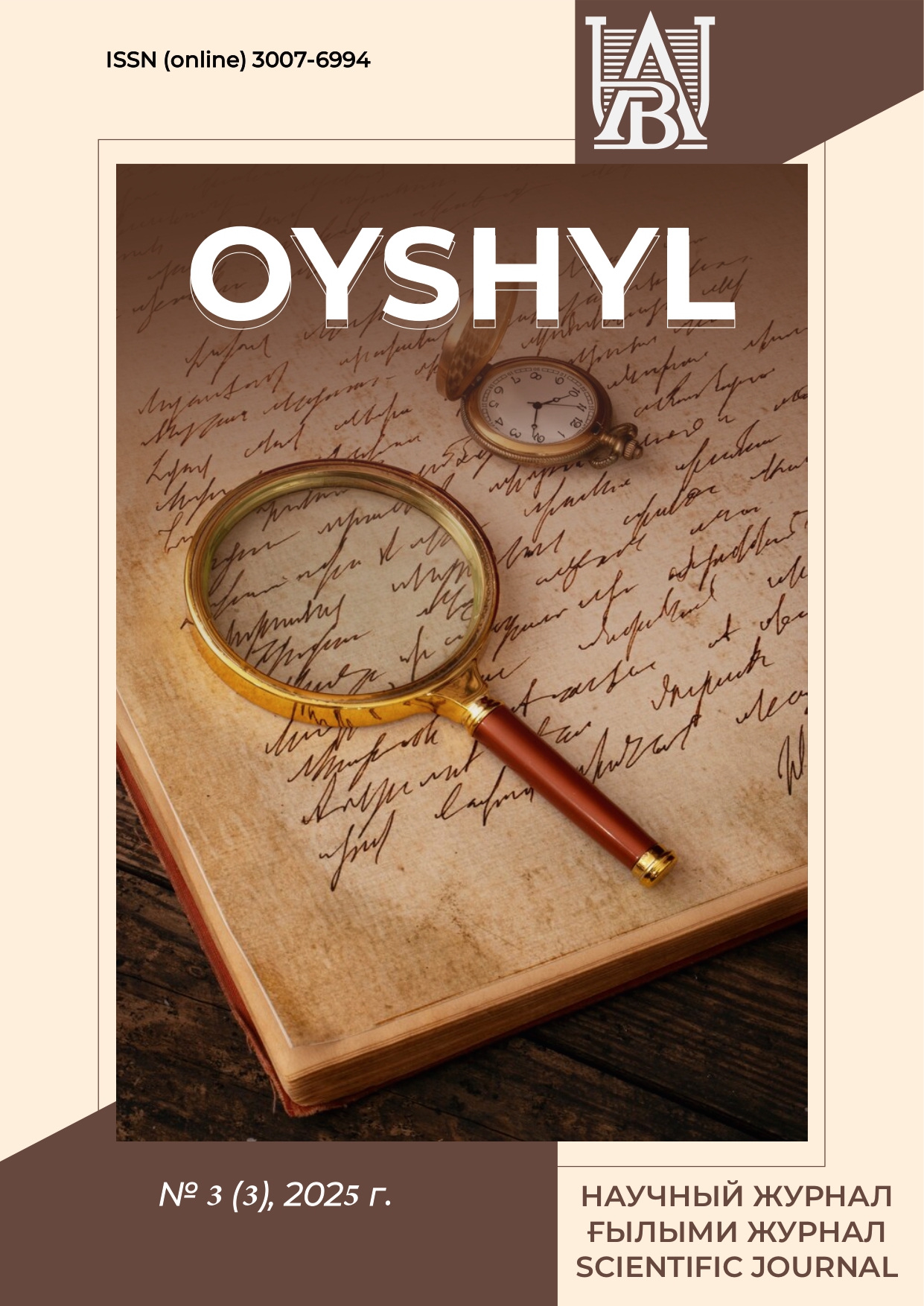STUDY OF THE «TRICKSTER» ARCHETYPE IN WORLD AND KAZAKH LITERATURE
Keywords:
archetype, trickster, image, folklore, fictionAbstract
This article examines the trickster archetype in world and Kazakh literature. This phenomenon remains relevant in literary studies. The significance of the trickster archetype, its types, and its manifestations in literature are explored. The essence of the trickster and its key characteristics are identified. In the course of the study, theoretical aspects of the trickster were analyzed using the works of both foreign and Kazakh scholars who study archetypes, such as C. G. Jung, P. Radin, D. Gavrilov, S. Kondybay, A. Taishanuly, A. Kaliyeva, and others. Archetypal theory plays an important role in literary studies as it allows for the examination of the structural foundations of literary works, their symbolic meanings, and recurring images in the collective human consciousness. In literary works, archetypes shape the storyline, character development, and textual symbolism. This theory also contributes to identifying historical continuity and cultural connections in literature. The trickster is one of the most significant archetypal figures. It appears in the folklore and literature of all nations, participates in all stages of cultural development, and possesses a collective character. The English word “trickster” means a deceiver, rogue, or trickster. A trickster is a figure from mythology, folklore, and fiction who engages in actions that contradict societal norms and established laws. This figure can be either a human or an anthropomorphic animal. In literary works, the trickster can act as both a main and a secondary character. Thus, the trickster is of interest for research not only as a historical phenomenon but also as a tool for studying modern cultural values and social issues.

